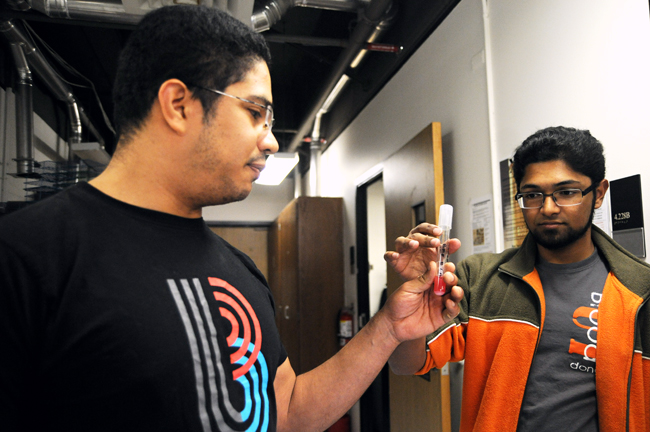A team of UT students is working to identify a genetic engineering project to follow-up on last year’s success at an international competition.
About 20 students are members of UT’s International Genetically Engineered Machine, or iGEM, team, which has entered its second year after winning an award for best experimental measure approach in MIT’s international competition last year. The aim of the competition is to genetically modify organisms to do certain tasks like machines. Last year, this meant modifying E. Coli to metabolize caffeine.
“The most important thing is that number one, we produce some sort of science and something interesting and useful to the scientific community,” said Marco Howard, chemistry and mathematics senior and iGEM team member. “We’re trying to take stuff that already exists and put it together in a new way that creates new functions.”
Michael Hammerling, cell and molecular biology graduate student, said this research experience is invaluable for the team members, who he advises.
“It really is more of an independent research for undergrads than your average lab experience,” Hammerling said. “We start out the year with a bunch of ideas … [and] over time we get … that some of them are better ideas than others, some are more feasible.”
iGEM students are currently in smaller teams working on different projects, but will have to pick a project by the summer so they have time to research it in depth before the competition, which is first regional and then international.
Currently, Hammerling said, he is excited about a project that would insert genes from mussels, which produce a cement-like glue, into E. Coli, making the bacteria produce the glue for use in surgeries.
“[The bonds from this glue] are very strong, they’re not [attacked by the immune system], and they’re biodegradable,” Hammerling said.
Hammerling said this makes the glue from mussels perfect for surgeries where doctors would want to attach something with a strong bond that would take years to degrade, but the glue is currently too expensive. He said the iGEM team is not the first to notice this, but they think they may have a better solution to the challenging problem.
“It requires you to rewire the entire bacterium,” Hammerling said. “E. Coli didn’t evolve to sit in a test tube and produce proteins for us … you need to try and take the genetic elements that you are constructing and make them in a way that works with the E. Coli host.”
Biology senior Benjamin Slater said the process of modifying E. Coli is difficult, but he is excited about how accessible the process has become.
“Taking a novel organism that can do something really cool and then characterizing the things about that organism that allow it to do that cool thing, and then moving those things to a new organism has never really been possible before,” Slater said.
Slater said he believes the public should come to understand the genetic engineering of organisms and the benefits it can provide.
“People are afraid of synthetic biology,” Slater said. “[But it has] the incredible potential to reshape our world and hunger and disease.”





















